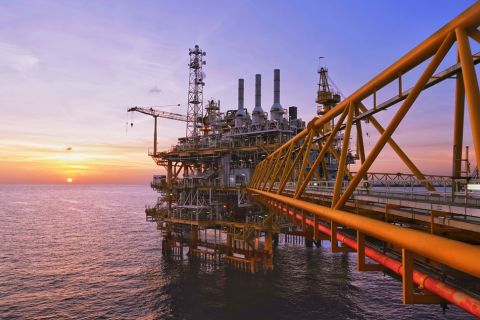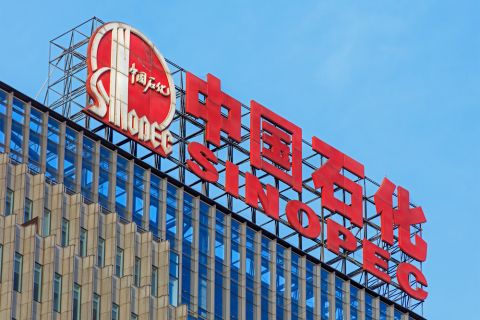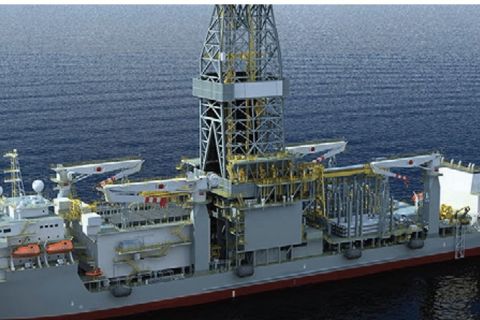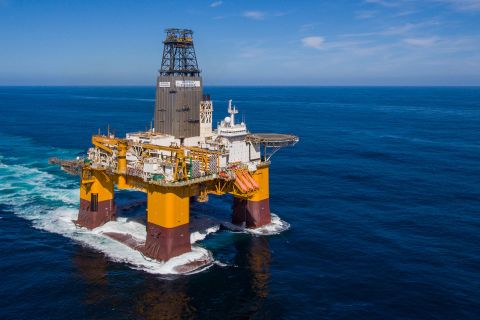Howard Energy Partners had the good fortune to be at the right place at the right time as South Texas’ promising Eagle Ford unconventional play opened up. But its management realized the Eagle Ford boom couldn’t last forever and decided to go into new business lines and other regions that would permit its growth to continue.
That strategy has been a success. It sets the midstream player in an excellent position for an even more rapid expansion when the downturn ends.
Founder, chairman and CEO Mike Howard visited with Midstream Business to give his view of the future for both his company and the sector.
Mike Howard
MIDSTREAM Howard Energy Partners is a fairly new midstream player, how did the company come together?
HOWARD I was working for large companies before and, wanting to get a little more fulfillment in my life personally, I wanted to get back to how I started, which was in the field. I started out as a field engineer, getting closer to people and assets. I had worked my way to executive positions, distancing myself
from the field, and I didn’t find it to be particularly fulfilling. So I started going down a path to create what I called at the
time “a meaningful endeavor.” I didn’t want to just work for another company. I wanted to work for something that I created— that was principle-driven—and my feeling at the time was to work for something that provided me personal fulfillment. It still is. We all have to work for a living so I might as well work for something that
I enjoy doing. It’s not a very novel concept; people have been chasing that theory for years.
In 2010, I quit my job and started working on developing some guiding principles for a new company, princi-ples that had nothing to do with money or profits. I figured that if there were money to be made, profits or wealth, that would be a consequence of these principles, but profit was not the reason I was doing it.
I started on a pretty direct path and that led me to finding a partner who has helped me raise money, Brad Bynum, who is the president of our company. Together, we started Howard Energy in June 2011. Brad has been instrumental in this company. We shared the same vision, and he has been my partner since day one. He has helped fulfill those guiding principles and build a manage-ment team that has gotten us where we are today.
MIDSTREAM The Eagle Ford has been your core service area—a play that has had its challenges recently. Have you seen an uptick in activity as commodity prices have improved this year?
HOWARD Our specific area of Eagle Ford is the western Eagle Ford, we’re primarily in Webb County [Texas]. We have not seen an uptick based on com-modity prices yet, we tend to be in an area that has leaner gas. There is very little oil drilling going on in our particu-lar area, it’s mostly natural gas.
We do anticipate—as we’re complet-ing our project in Mexico—that by cre-ating a new demand center and as more natural gas is needed in Mexico, that this will help commodity prices of the area—and hopefully start some drilling.
MIDSTREAM What does the Eagle Ford need most from a midstream perspective?
HOWARD That’s an interesting ques-tion. It could use more demand. We have LNG exports coming online, and Mexico needs to do what it said it was going to do, which is create demand that will help the Eagle Ford area.
From a large infrastructure stand-point, I feel like we are built out in the Eagle Ford—unless new demand comes up. We’re building more pipe to supply that demand but, as far as the Eagle Ford itself, the future infrastructure will be through gathering lines, processing plants, amine plants, compression— that sort of infrastructure. The large highways have been built.
MIDSTREAM Your Live Oak sta-bilizer was a pioneer operation in the stabilized condensate business that emerged before the repeal of the crude export ban. Is there still a market for stabilized condensate?
HOWARD Yes. The production com-ing into our stabilizer still doesn’t meet the specifications for export. In order for it to be exported, it has to meet
a certain physical criteria, 9-pound vapor pressure or less, and the stuff that comes into our stabilizer is still at 100 to 150 pounds of pressure. It still has a lot of entrained methane, ethane and propane that we have to remove from the product.
MIDSTREAM Exports seem to be a major component in your growth strategy, and one of your first moves into that market was the purchase of terminals at Port Arthur and Brownsville, Texas. How are those businesses performing?
HOWARD What is interesting is that, because of the size of the company that we were and how we started, we have always geared our business to what the market will give us. When we started the business, natural gas prices were doing pretty well, but sometime in 2011 they dropped drastically. Oil prices were coming up. As you know, people started shifting their drilling from natural gas to crude oil and rich gas. So we got into the rich gas processing business; we got in the stabilizing business.
Now, both commodities are sup-pressed. We didn’t have a crystal ball to predict it, but we know that having a diversified portfolio of assets is the trick to staying in business for a long time.
With that in mind, we started on a path in 2012 to look for ways to di-versify away from the drillbit. Our two business lines that we found specifically were natural gas exports and terminal-ling. Our assets are located on the bor-der, so it was kind of natural for us to go to Mexico. I grew up in South Texas and already had business relationships there, so it was very natural for us
to try to supply that demand center. Second, terminalling and storage were away from the drillbit but still provided qualified income. So we started ap-proaching those projects in Brownsville and Port Arthur.
Another business line that we ap-proached was logistics and rail. We have not grown this segment of our business as much as the previous two I men-tioned, but we are well-positioned. It is another way for us to diversify our busi-ness and to continue to grow in a down commodity environment.
MIDSTREAM Howard Energy looks to become a significant player in Mexi-co’s natural gas transmission business with its Nueva Era Pipeline. What’s the status of that project?
HOWARD Yes, we are full-speed ahead on the Nueva Era project. We are actively buying right-of-way in Mexico. We have completed our pipe purchase both in Mexico and in the U.S. and have selected contractors. Construction is set to start this summer, so we are on schedule. We’re continuing to look for more customers and more demand to add to the pipe—we’re very excited.
Our projects in Mexico have been really neat to put together. It has taken a lot of years, a lot of relationships and due dil-igence, but actually seeing it come together by sign-ing the purchase orders for that many miles of pipe, by actually going out for construction bids, is a great feeling.
There’s a lot of focus on this project because there are just not that many big projects hap-pening right now in the U.S. That means there is a lot of interest in supplying the services needed to build that pipe.
MIDSTREAM Your Dos Águilas pipeline proj-ect to Mexico builds on your petroleum products terminal at Brownsville. How would you compare Mexico’s needs for im-ported fuels to its demand for gas imports?
HOWARD They need both forms of energy. There is a ton of industry moving into Mexico. We are seeing a growth in the
middle class, where people are convert-ing their towns and homes to natural gas; they’re buying cars and driving them. Right now, Mexico is not able to provide those fuels. So we see approxi-mately 400,000 barrels a day of refined products imported to Mexico.
The way they import those products is an issue. There is a lot of news about pipeline loss, where they have a hard time being able to get all the product to where it’s going to. We can help supply those fuels in a safe manner. We are not going to be able to supply all 400,000 barrels, but Dos Águilas will be able to supply 72,000 barrels a day, and that can be expanded to 90,000 barrels. That will satisfy a large part of north-ern Mexico’s needs.
It will come from a diversified mar-ket, which would be Corpus Christi [Texas] for refined fuels, diesel and gasoline. That will open Mexico to more competition, open them up to be able to get a cheaper supply of energy than what they’re achieving now.
Dos Águilas fits right into our trans-portation and storage business. We’re using the same roadmap that we used for Nueva Era. We have a great rela-tionship with large consumers down in Mexico, and we have a lot of demand right now.
In fact, we recently completed a very successful open season for the Dos Águilas project. We received more than enough interest from customers to move forward, which really validates the project and confirms the Howard Energy philosophy that what is good for Mexico is good for South Texas.
Dos Águilas, like Nueva Era, is one of the first projects of its kind, where we’re providing seamless transportation from a more competitive source of sup-ply to the end user in Mexico.
In most every other project—I can’t think of one that’s not this way—you provide transportation to the border, then from the border into Mexico. With Nueva Era, we actually worked with the regulatory authorities in Mexico to make a seamless transportation rate for our customers. You still, of course, have contracts here for the United States and contracts for Mexico, but the customer picks up one phone, calls one person, and gets their molecule delivered to their delivery point.
It’s the same way with the gasoline and diesel. They will pick up the phone and they’ll order their product. We will transport it to exactly where it needs to go. They don’t have to do it in four stages— where you get it to the border, you get somebody to cross the border, you pick it back up at the border, then you go into where they want to go. This is very seam-less, which makes us much more compet-itive. The product doesn’t change hands for the first time. That strategy worked on Nueva Era, and I feel like it’s going to be successful in Dos Águilas.
MIDSTREAM You moved into the Marcellus play last year with the acqui-sition of Southwestern Energy’s gath-ering system. What’s different about Appalachia, compared to South Texas?
HOWARD What we were excited about when that project came along and what we continue to be excited about is the demand pool aspect of the Marcellus. You have a large, long-last-ing natural gas resource, up against a large demand center: the Northeast. The demand pool is going to drive pro-duction there for a long time. It’s really the same philosophy we implemented in South Texas, a basin where there has been drilling activity for a long time, and where they are going to continue to drill for generations. It’s a place that we can establish ourselves, start doing business development and be there for years to come.
MIDSTREAM When you combine Howard Energy’s active capex program and major acquisitions, 2015 was a very busy year for the firm. What do you see at the midway point of 2016?
HOWARD One of our best assets right now is that we’re private. We are not subject to the equity market. Public firms, no matter how good their assets are or how good their team is, they are gauged as an energy company, and they have to live with the suppressed market environment that we’re in right now.
As a private company, we don’t have the same market dynamics, so we’re out raising capital right now to be prepared with dry powder so that in the event assets become available—and we believe that more assets will become available in this environment—that we should be able to capitalize on those things.
We have over $1 billion of new-build projects, so we are not actively engaged in any M&A processes at this particular moment. If we just accomplish what we have in front of us, we’re great. We’re growing rapidly, just on our organic build. But if we do have the opportunity to buy something in this suppressed market environment, we want to be ready for that as well.
MIDSTREAM You refer to Howard Energy as a “growth-oriented mid-stream provider.” Any plans for an IPO soon?
HOWARD In this market environ-ment it would be very difficult. There are just no equity markets available to companies like ours. When the mar-kets come back, I think it’s a logical conclusion that is where we will go, as that is by far the cheapest access
HOWARD We are in the market like everybody else. It is a painful time in our business, as you know. It’s hard talking to our peers and talking to our customers right now.
I’m happy with how we’ve posi-tioned ourselves, and I really see that our diversification strategy is paying off in this environment. If we were just sub-ject to growing as a gathering company in basins that have nearly zero drilling rigs, I would have a very different con-versation here. But the fact that we are diversified and doing what we are doing is, I feel, a positive in a market where there’s no positive news.
Recommended Reading
Equinor Receives Significant Discovery License from C-NLOPB
2024-02-02 - C-NLOPB estimates recoverable reserves from Equinor’s Cambriol discovery at 340 MMbbl.
Sinopec Brings West Sichuan Gas Field Onstream
2024-03-14 - The 100 Bcm sour gas onshore field, West Sichuan Gas Field, is expected to produce 2 Bcm per year.
Trio Petroleum to Increase Monterey County Oil Production
2024-04-15 - Trio Petroleum’s HH-1 well in McCool Ranch and the HV-3A well in the Presidents Field collectively produce about 75 bbl/d.
Valaris Updates Fleet Status
2024-02-19 - The backlog of these contracts and extensions is valued at $1.2 billion.
Less Heisenberg Uncertainty with Appraisal Wells
2024-03-21 - Equinor proves Heisenberg in the North Sea holds 25 MMboe to 56 MMboe, and studies are underway for a potential fast-track tieback development.





